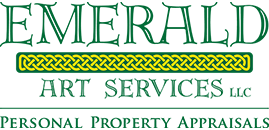Disaster Planning and Monetary Archival Appraisals; An Overview
In light of the extensive losses incurred by natural and manmade events, it is imperative that archivists and others charged with the safety of our archive collections be proactive in the protection of those collections. Disaster planning cannot prevent disconcerting events from occurring but it can minimize the effects of such occurrences, while the monetary valuation of archives provides valuable insights to the owners of the collection. Libraries, governmental entities, historical societies and even private corporations are the stewards of important archive collections. Literature, maps, letters, documents, business contracts and photographs are but a few of the cultural and historical archives represented in these collections. They tell the story of our evolution and development as a society. As daunting a task as disaster planning appears, it is not as distressing as watching your archives burn in a fire or get washed away in a flood. These seem like extremes and they may well be, but consider vandalism, water pipe breaks, roof leaks, explosion or even theft. The development of a working disaster plan will give you “peace of mind” and will enable you to move or at least protect your collections, formulate triage lists, assemble disaster kits, negotiate first response agreements and obtain monetary appraisals of the collection prior to a harmful event occurring. Having both a disaster plan and current monetary appraisals can also reduce your insurance expense and provide for a smoother claims process, should the need arise.
To an archivist the term “appraisal” is generally believed to mean weighing the relative value of records or documents to decide what is to be accessioned or de-accessioned. Appraisal to a records manager is to establish retention guidelines where an appraisal to an IT administrator might be planning a migration strategy. One of the less thought of definitions of appraisal in the arena of archive collections is monetary. A monetary appraisal is the “act or process of developing an opinion of value”[1]. There are many functions for undertaking a monetary appraisal of archival materials; documents may be appraised for insurance replacement, probate, donation, purchase, sale, historic, research and intrinsic considerations to name a few. It is important for the archivist to have a working knowledge of the value of the items in his or her institution. For instance, without a general grasp of market demand for an item, the archivist is unable to know whether a donation might merit evaluation for a tax deduction. This data will also be required in negotiating with those wishing to sell items of interest to the archive and developing a disaster plan. A thorough knowledge of market values is also useful in establishing standard insurance coverage for the archive through the institution’s Department of Risk.
The monetary appraisal of archival material is time-consuming and difficult. Authenticity, genuineness, provenance, accessibility to the information contained in the documents, and ancillary items such as stamps, covers or wax seals can all effect the archives monetary value. As previously defined, a monetary appraisal is the “act or process of developing an opinion of value”[2]. The term “process” implies that some methodology is applied to the development of a subjective monetary value. While the methodology is generally an agreed standard between the few associations accrediting personal property appraisers, the appraisers individual background, experience and research capabilities weigh significantly on the value opinion. Appraisals normally take place where the archives are housed. An archivist preparing a collection for a monetary appraisal can assist in the process by laying out the materials in a sufficient workspace for the appraiser(s) and by preparing a clear, well organized inventory and index of the archives to be appraised. The inventory should include the dates of the collection, the size, and a brief biography of the creator. The history and provenance of the collection should be outlined and clear evidence of the authenticity of the materials should be provided. The majority of this information has probably already been completed as part of the archival or records management appraisal of the collection. Making this information available to the appraiser will significantly reduce the appraisal costs incurred by the archive. Considering the quantity of archival material, the administrative preparation necessary for the approval and implementation of a plan, the development and approval of a budget for the required expenditures, and locating an appraiser to value the collection, it is agreed that developing a disaster plan and contracting the monetary appraisal of an archive collection is a time consuming and expensive task. However, if you weigh these challenges with the intrinsic and monetary costs of losing even part of your collection, you will find that the hard work and expense in developing a disaster plan and a current monetary appraisal can prevent even greater challenges should a hazardous event strike your collection.
Contact cris@emeraldartservices.com to schedule a free phone consultation.
_______________________________________________________________________________________________
[1]Uniform Standards of Professional Appraisal Practice: USPAP 2008-9; definitions
[2] ibid

